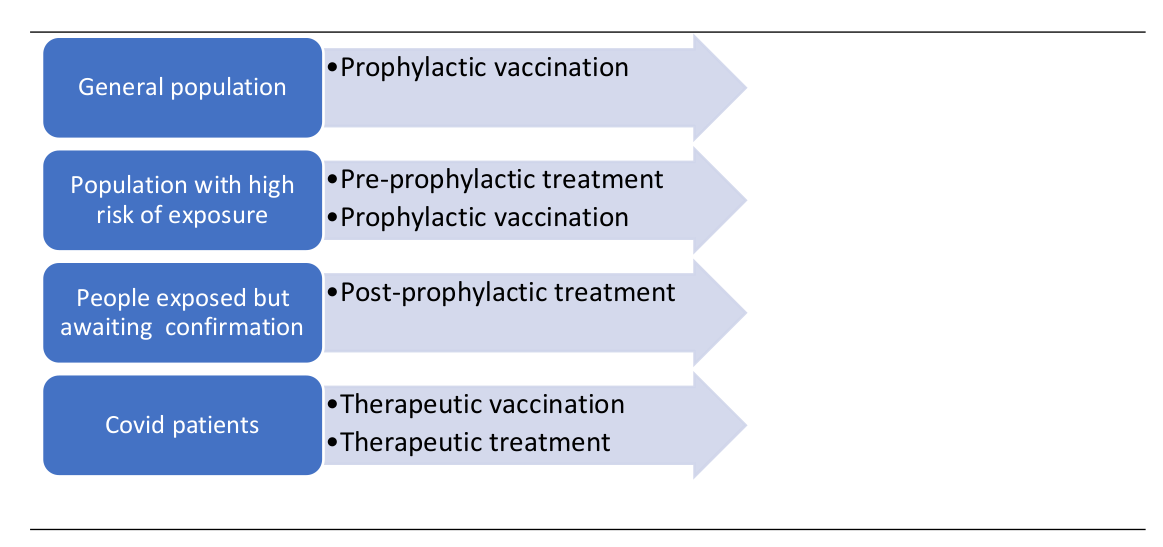When will this pandemic with its disruption of lockdowns and restrictions on everyday life end, and borders re-open for safe and uninterrupted quarantine-free travel? In the second year of the Covid 19 pandemic, amid a less than perfect global vaccination roll-out, any sign of new outbreaks still triggers lockdowns and restrictions. Given the emergence of new and more infectious variants like the Delta variant, public safety and preventing health system from being overwhelm remain the primary concerns of many governments.
With each successive rounds of lockdowns and restrictions the broader societal and economic consequences becomes more pressing. Governments are aware of that the current strategy of public safety first at any cost is not sustainable but few have come up with a viable roadmap to do something difference. There are exceptions. For example, a few days ago, the Singapore government Covid 19 ministerial taskforce announced such a roadmap.
In this article I add my voice to this new narrative and look forward to feedbacks and shared learnings on the “new normal”.
In my personal view, by 2023, we will still be living with Covid 19. The good news is, more significant levels of social and economic connections will resume but under a "new normal." So, what can we expect in 2023 new normal? In this post, I highlight several key developments that, in my view, will be part of the new normal, namely: 1. Vaccination 2. Prophylactic treatments 3.Therapeutic treatments 4.Testing for immunity 5.New tests for Covid infections 6.CovidSafe Passport Initiative 7.Covid symptoms screening and monitoring 8.A new generation of face masks 9.Ventilation & air quality 10.Surveillance
1. Vaccination - the type of vaccines, frequency, and method of delivery
Vaccines in 2023, will have the dual purpose of prophylaxis and therapeutic. The development of therapeutic vaccines builds on the advances made in 2020 and 2021 rapid development of mainly prophylactic vaccines. While prophylactic vaccine’s purpose is to protect individuals from infection, therapeutic vaccine aims to help an infected person's body fight harder against the illness will be available. Therapeutic vaccines when used in conjunction with drug therapy can speed treatment and recovery for confirmed infected Covid patients.
By 2023, the break the transmission of we need a new generation of vaccines that: 1. combines Covid 19 with the seasonal influenza. 2. provide multi-year immunity and 3. can be delivered through less invasively (for example, an oral spray)
2. Prophylactic treatments Post exposures prophylaxis (PEP) therapy uses medication for someone exposed to Covid 19, usually within a certain timeframe after exposure, to reduce their chances of being infected. Pre- exposure prophylaxis (PrEP) therapy uses medication for someone who does not have Covid 19 but has a high risk of being infected, for example, health workers looking after Covid patients. The poster child for both PEP and PrEP is HIV, wherein the absence of a vaccine, these antiviral drugs have played a key role in bringing the HIV epidemic under control.
By 2023, we need a combination of both PEP and PrEP therapies that will be key to protecting those who are exposed or at risk of exposure to Covid 19.
3. Therapeutic treatments In the early days of this pandemic in 2020, therapeutic treatments for Covid 19 patients were very much trials and errors. Various antibiotics, steroids and oxygen supplement therapies were used to alleviate sufferings and save lives. Some worked better than others and by 2021, clearer and evidenced based clinical guidelines on therapeutic therapies were making a difference for hospitalized moderate and severe Covid 19 patients.
By 2023, we need therapeutic treatments that are easily accessible, affordable and administered earlier in a primary, community and home setting, particularly for mild and moderate Covid 19patients. This early therapeutic intervention will prevent infected cases from developing severe illness that requires hospitalization.

4. Testing for level of immunity
In 2021 the focus is to get everyone vaccinated. Vaccine nationalism, production and logistic challenges will mean that for some countries this ambition is unlikely to be met until 2022.
By 2023, the focus on vaccination will have shifted another gear to understanding the level of immunity protection for individuals. Affordable rapid blood test (for example finger-prick test) will test for levels of: 1. Antibodies (proteins that can neutralize the virus ability to infect or spread) 2. B-cell (cells that can stimulate the production of further antibodies if they encounter the presence of the virus) 3. T-cell (cells that directly kills the virus-infected cells)
This insight increasingly becomes critical to understand why some vaccinated people are still being infected. Annual tests will be the norm, but for the more vulnerable population and those with underlying health conditions, more frequent tests may be needed.
5. New tests for Covid 19
In 2020 and 2021 the RT-PCR test is the main diagnostic and screening test for Covid 19. By 2022, rapid tests such as Antigen Rapid Test (ARTs), Saliva and Breathalyzer tests need to emerge to complement the RT-PCR test. These rapid tests with equivalent sensitivity and specificity as RT-PCR test will provide results in minutes rather hours or days.
By 2023, new rapid tests with equivalent sensitivity and specificity as the RT-PCR tests need to become the frontline tests of choice for potential Covid 19 infection where rapid results reporting is mission critical (for examples at airports, ports and venues hosting events with large crowds).
6. Pre and post exposure Covid symptoms screening & monitoring
The common symptoms for Covid 19 are now well documented. Given the infectious nature of Covid 19 and its potential for serious illness and death, pro-active screening and monitoring of Covid 19 symptoms is prudent, especially for those with underlying health conditions.
Wearables and at-home devices capable of monitoring respiratory rate, heart rate at rest, blood oxygen level, and temperature are easily available at affordable prices.
By 2023, the market for such wearables and at-home devices will expand as screening and monitoring of Covid symptoms becomes a key part of the new normal.
7. A new generation of face masks
The Covid 19 pandemic has highlighted the importance of wearing face masks as an effective non-pharmaceutical protection measure. The standard three-ply medical disposable face masks work as follows <sup>1</sup> :
- The inner layer is hydrophilic and absorbs moisture and aerosols from the user.
- The middle layer is a filter that filters air particles and prevents particles of specific dimensions from entering both sides of the facemask.
- The outer layer is hydrophobic; hence, it repels aerosols and water droplets from the outer environment.
In 2021 the emergence of the more infectious Delta variant has raised concerns over the efficacy of the standard three-ply masks. As a result, some countries have recommended wearing two layers of face masks (a reusable mask on top of a standard three-ply mask). However, standard disposable masks are uncomfortable to wear for long periods and are produced an unacceptable amount of plastic wastes.
In 2023, as the wearing of face masks becomes an accepted norm, new generation face masks with their new designs, new materials, and advanced technology will be:
- more comfortable, especially for prolonged usage,
- provide greater protection with self-cleaning and self-sterilizing properties, and
- more environmentally sustainable with emphasis on reuse rather than disposables.
8. Better ventilation and air quality
As more virulent variants such as the 2021 Delta strain becomes dominant, there is a greater focus on aerosol transmission. Especially for indoor environments where the risk of infection increases when people are sharing air in a poorly ventilated environment.
By 2023, indoor venues such as schools, offices, shopping malls, restaurants and convention centres will need to have HVAC (heating, ventilating and air-conditioning) systems with appropriate air cleaning system using HEPA (high efficiency particulate air) filters. In addition, such facilities need to constantly measure and report publicly metrics for air quality (for example CO2 levels above 800 ppm, is a potential red flag of poor air quality subject to the size of the room and number of people in it).
Greater awareness of the importance of ventilation will see more people investing in wearables and portable devices that can measure air quality and ventilation.
9. Surveillance testing
In 2021, wastewater testing has proven a useful tool to detect prevalence of Covid 19 in communities. By 2023, we need “precision” surveillance testing that can provide greater details on locations of positive results, for example the name of the street. This can be a game changer to proactively take preventative measures for those who may not be aware they have been expose.
In addition, atmospheric surveillance testing of high-risk indoor venues and facilities would provide another level of detection of potential aerosol transmission.
10. CovidSafe Passport Initiative
In 2021, travel between certain countries requires evidence of vaccination. By 2023, this concept of a “vaccine passport” is likely to be developed further into a much broader concept like a “CovidSafe passport”. Its utility will go beyond safe travel and opening of borders but also for safe access to high security critical infrastructure facilities as well as for hosting major events.
CovidSafe Passport potentially will be a digital platform where users and participants can share and access information securely and safely. Information to be shared could include:
- Vaccinations
- Tests
- Treatments
- Immunity levels
FINAL WORD
The above personal reflection is an exercise in crystal gazing on my part. When 2023 comes around, I am hoping that my reflection is proven to be too pessimistic.
If my reflection is proven to be too optimistic, then I worry that we will have a much bigger societal problem on our hands apart from this Covid 19 pandemic. The on-again and off-again lockdown and restrictions in various forms have created unsettling mindsets, attitudes, and behavioral changes. As a result, there are growing frustrations, anger, resignation, apathy, indifference, defiance, fear, especially for the displaced and marginalized.
For a better 2023 than what I have painted, current short-term focus, reactive, narrow, and shallow strategies need rebalancing with strategies with a longer-term focus, forward-looking, broad, and deep. Likewise, the current translation of strategies into actions (with few exceptions such as vaccine development) needs to shift from linear, rigid, and glacial to exponential, agile, and with deliberate pace. There is still time. But ultimately, it all depends on the quality of our political, public, and private sector leaders.
Chai 。仁材 Chuah 蔡
Wellington, New Zealand
24 th June 2021

